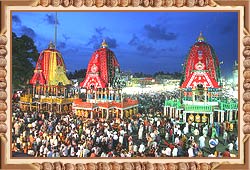 India is land of age old spiritualism. Unlike other religions Hinduism, the main stay of India does not recognize a single prophet and idolizes innumerable gods and goddesses. Evidently, the country also has numerous pilgrimages scattered throughout, from north to south. One such pilgrimage that holds enormous significance for Hindus is the Amarnath Yatra. I have been fortunate enough to take this yatra last year. It was such a memorable journey that I want to share my experience with you. This Yatra or journey is taken up by devotees during ‘shravana’ or the monsoon season. So, I along with my friends started our pilgrimage to Amarnath on 15th of July as Darshan at the Holy Cave is generally open from early July (Ashad Purnima) to early August (Sharvan Purnima).
India is land of age old spiritualism. Unlike other religions Hinduism, the main stay of India does not recognize a single prophet and idolizes innumerable gods and goddesses. Evidently, the country also has numerous pilgrimages scattered throughout, from north to south. One such pilgrimage that holds enormous significance for Hindus is the Amarnath Yatra. I have been fortunate enough to take this yatra last year. It was such a memorable journey that I want to share my experience with you. This Yatra or journey is taken up by devotees during ‘shravana’ or the monsoon season. So, I along with my friends started our pilgrimage to Amarnath on 15th of July as Darshan at the Holy Cave is generally open from early July (Ashad Purnima) to early August (Sharvan Purnima). For yatra to Baba Amarnath Holy Cave, we have to trek a height of about 14,500 ft and the journey was full of joy and thrills. The environment was divine and we were feeling as we are walking through the heaven on earth. It is said that the devotees attain ‘Moksha’ or freedom from rebirth by reaching to this cave of Lord Shiva- the most important God Head of Hindu mythology and even we were thinking it to be true. Pilgrims gather from all around the world to offer their prayers to the ‘Shivlinga’ residing in the cave. Surrounded by beautiful valleys and mountains, we felt like walking in the Kailasha hills which is said to be the abode of lord Shiva. The enchanting of mantras and the religious slogans like “Bam Bam Bhole”, “Jai Baba Amaranth”, “Jai Baba Barfani” and others made us feel the presence of lord Shiva everywhere around me. It was such an experience that would hardly vanish with time. I feel the journey to the Amarnath cave is such that pilgrims can rediscover Mother Nature and her love for human beings.
Legend has it that Shiva recounted to his wife Parvati, the secret of creation in a cave in Amarnath. Unknown to them, a pair of mating doves heard this conversation and having learned the secret were reborn again and again and they made the cave their eternal abode. Many pilgrims report seeing the doves-pair, when they trek the arduous route to pay obeisance before the ice-lingam (the phallic symbol of Shiva), but I was not that fortunate to see them.
The Amarnath Yatra is conducted once in year by the Jammu and Kashmir Government. The climatic conditions are extremely uncertain. Rain or snowfall may take place at any time or place during the Yatra. It is to be particularly noted that abrupt changes in temperature might occur. Sunny weather may turn into rain / snow fall in a short span of time. The temperature also may fall up to -5 degree Celsius. Uncertain climatic conditions often make the journey unpleasant and difficult for the pilgrims and you should take proper care and make adequate arrangement before taking up Amarnath Yatra. Such is the faith and dedication, that all pilgrims brave the adverse conditions and reach the abode of their God. But, one thing that really hurt me was the garbage being spread by the pilgrims which is causing great environmental hazard to this beautiful abode of God. I think persons should behave little responsibly and should not indulge in such things. Then, only we would be able to save the utmost beauty of nature coupled with divinity.
